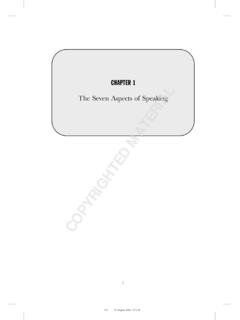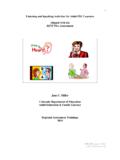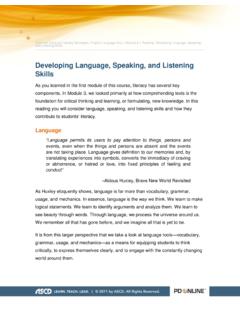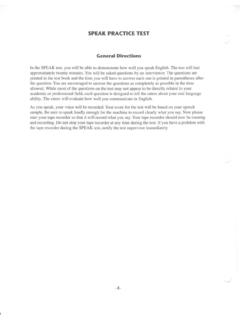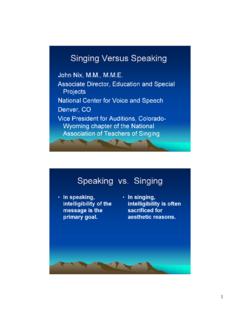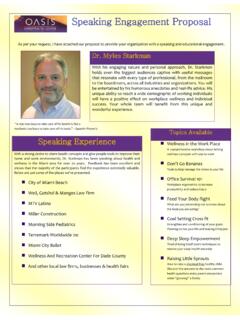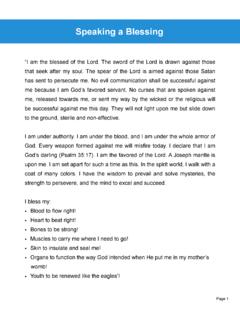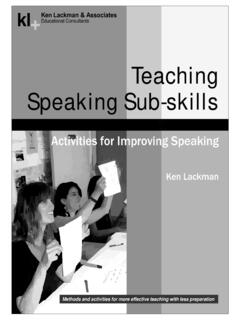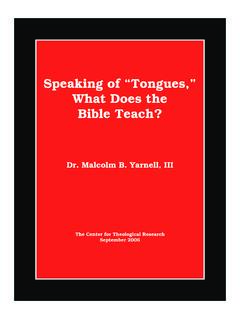Transcription of Microskills for Listening, Speaking, Reading, and Writing
1 2012 Teachscape (Adapted from Brown, 2001) Each of the four areas of language proficiency involves a variety of Microskills . These skills are often overlooked by teachers as an area of instructional focus; however, ELLs may not have had opportunities to acquire these skills. They may need direct instruction and time to use the skills in order to fully participate in the classroom lessons. Examples of Microskills in each area are provided below, although the lists are by no means comprehensive. Listening Retain chunks of language in short-term memory. Discriminate between the distinctive sounds of English. Recognize reduced forms of words. Process speech at different rates of delivery.
2 Process speech containing pauses, errors, corrections, and other performance variables. Recognize grammatical word classes ( , nouns and verbs), systems ( , tense, agreement, and pluralization), patterns, rules, and elliptical forms. Recognize cohesive devices in spoken discourse. Recognize the communicative functions of utterances, according to situations, participants, and goals. From events, ideas, etc. described, predict outcomes, infer links and connections between events, deduce causes and effects, and detect such relations as main idea, supporting idea, new information, given information, generalization, and exemplification. Distinguish between literal and implied meaning.
3 Develop means of retaining information. speaking Produce chunks of language of different lengths. Produce English stress patterns. Use an adequate number of words to accomplish purpose. Monitor oral production and use strategic devices ( , pauses, fillers, self-corrections, and backtracking) to enhance the clarity of the message. Use grammatical word classes ( , nouns and verbs), systems ( , tense, agreements, and pluralization), word order, patterns, rules, and elliptical forms. Use cohesive devices. Accomplish appropriately communicative functions according to situations, participants, and goals. Use appropriate registers and conventions in for Listening, speaking , Reading, and Writing 2012 Teachscape Microskills for Listening, speaking , Reading, and Writing Page 2 of 2 Convey links between events and communicate relations such as main idea, supporting details, new and given information, generalizations, and exemplification.
4 Use facial features and body language along with verbal language to convey meaning. Reading Discriminate among the distinctive graphemes and orthographic patterns of English. Retain chunks of language of different lengths in short-term memory. Process Writing at an efficient rate of speed to suit the purpose. Recognize a core of words, and interpret word order patterns and their significance. Recognize grammatical word classes ( , nouns and verbs), systems ( , tense, agreement, and pluralization), patterns, rules, and elliptical forms. Recognize cohesive devices in written discourse and their role in signaling the relationship between and among clauses. Recognize the rhetorical forms of written discourse and their significance for interpretation.
5 Infer context that is not explicit by using world knowledge. Recognize the communicative function of written text, according to form and purpose. Distinguish between literal and implied meaning. Writing Produce an acceptable core of words and use appropriate word order patterns. Use acceptable grammatical systems. Use cohesive devices in written discourse. Use the rhetorical forms and conventions of written discourse. Appropriately accomplish the communicative function of written texts according to form and purpose. Convey links and connections between events and communicate relations such as main idea, supporting details, new and given information, generalizations, and exemplification.
6 Distinguish between literal and implied meanings. Adapted from: Brown, H. (2001). Teaching by principles: An interactive approach to language pedagogy. White Plains, NY: Addison-Wesley.
